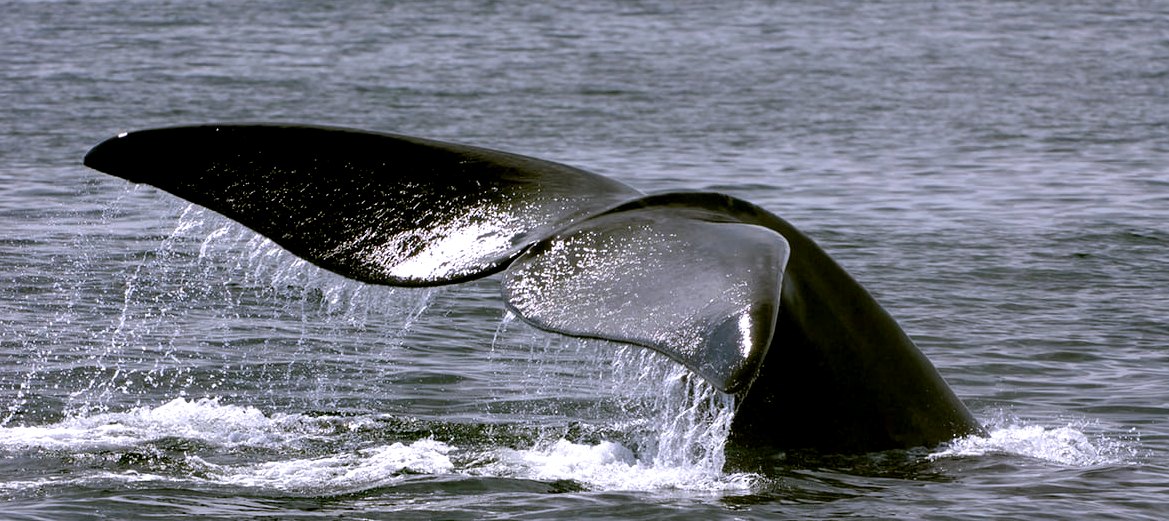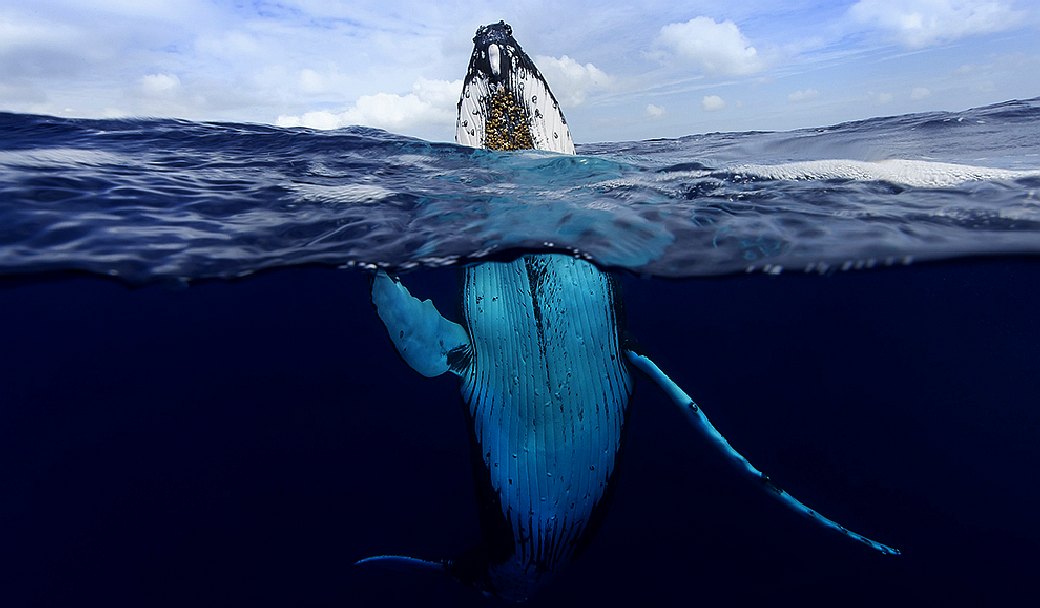|
WINDS OF CHANGE 580 W, 750 N - Ch 1 ABOUT - AGENTS - CHAPTERS - CHARACTERS - CONTACTS - DONATE - FOUNDATION - FUNDING - HOME - SCRIPTING - WHALING - A-Z INDEX
KULO LUNA - Grace and beauty, these giant fins propel the whale at considerable speed over thousands of miles from feeding to breeding grounds.
For 2020, the Kulo Luna story is undergoing conversion for the possibility of publication of a Special Edition graphic novel, by artists in the Sussex region of the UK.
This edition is condensed for a quicker visual experience with 5 chapters as 24 scenes:-
The twin-engine Shorts seaplane banked left, executing a graceful well practiced arc taking the craft parallel to an impressive sheer Arctic ice face some two hundred and fifty feet high. The pilot,
Peter
Shaw, motioned to his two passengers pointing toward a sheer frosted blue ice section the size of a small island, which had detached itself from the main body of compacted icecap, thousands of years old. They flew along the ice shelf one hundred and fifty feet above the sea.
“Yeah,” replied Steve after a long delay. He was transfixed on the scenery. Then after another long delay, the pilot continued,
“Few people are not impressed.” Before them was a panoramic expanse of white wilderness. Cold, clean and magnificent, yet in danger of slowly crumbling into the southern
Arctic
Ocean, its fragility revealed by man’s unrelenting transgressions against the delicate balance of nature:
Global Warming.
“The name ‘Arctic’ comes from the Greek for bear; ‘Arktos’ after the great white polar bear.” Steve nodded genuinely interested.
“So the Arctic is the icy land with bears?” asked Steve.
“That’s right,” said Peter “the Antarctic in so named because it has no bears. From the Greek ‘Anti’ and ‘Arktos’ making Anti-Arktos, or Antarctic; the land without bears.”
“And now nobody knows where the name came from,” said Steve, “they just think of snow blizzards and sub zero temperatures when they hear ‘arctic’.” Peter and Charley said
“Uh,huh” in unison then looked at each other.
“You are getting this?” referring to the visuals. Charley Temple was concentrating on capturing the unfolding scenery as the long range seaplane got close enough for the camera to pick up melt detail, thanks to some quality flying.
“Sure thing, boss”, whispered Charley, suitably tinged with sarcasm, trying not to move too much as large blocks of ice face obligingly cascaded into the freezing Arctic waters. This fast disappearing ice mass is home to seals and polar bears, who have a starring role in the unfolding tragedy that is man’s folly; for it is man alone who holds the quill that writes history with his unique ability to understand and influence his environment.
“Did you know it was here the iceberg detached, which sunk the Titanic.” Steve and Charley looked at each other, bewildered.
“No.” Said Charley. “Yes, they put it down to unusual weather activity at the time – 1912 I think, Baffin Bay, the big ship sailed from Southampton. Peter’s the name.”
“It was April,” said Charley, “I’m Charley. The night of the 14th and 15th, a bitterly cold evening in the North Atlantic.” Peter turned round to look at Steve and Charley, he frowned.
“How’d you know that missy?”
“Our family had a friend on board – a musician from Eastbourne,” Charley said in a low voice. “Never reached New York. 1,500 people drowned. They only found the wreck in 1985.” Steve looked surprised, Charley had never mentioned this before.
“That’s okay.” They all laughed awkwardly, stopping quickly to check they had lifejackets. Charley continued
“It wasn’t just the lifeboats, the lookout had no binoculars and they’d used cast iron rivets instead of steel rivets to join the hull plates, so when the ship struck the iceberg, the heads snapped off allowing the plate seams to part easily. Apparently, the radio operator was too busy sending passenger messages to pass on a message about ice further south than normal and had been rude to the Carpathia’s
radio operator, who then turned off their radio. Carpathia was less than two hours away at the time. For these reasons, the Titanic was fated and the passengers, who got off the ship, would have to wait four hours for rescue.”
“Control calling Echo, Four, Two, Delta, come in, over.” After his usual long delay, Peter replied,
“Hello control, Echo, Four, Two, Delta here. What can we do for you. Over.”
“We were wondering if your passengers managed to secure footage of the ice face? Over.” Steve had stopped working and was leaning over in anticipation, so Peter handed him the mike.
“Steve here control. Yes, we’ve got the package and just working on the narrative and sorting clips. ETA 80 minutes, over.”
“That’s what we wanted to hear Mr Green. Well done to both of you. We’re waiting for you. Thanks, over and out.” Steve handed back the mike and said,
“Was that about right for time of arrival?”
“We’ll have to do our best,” came back the pilot, rather quicker than usual.
“What’s the story then?” asked Peter. Do you know about the ODS?”
“The what?” said Steve.
“The Orbiting Density Sensor,” said Charley.
“I don’t know what that means, but I’ve heard of it.” A smile cracked on Peter’s rugged features.
“The ODS is a satellite which can measure the density of the earth’s surfaces. It’s a bloody useful little box of tricks if you’re a geologist prospecting for oil. But it’s also useful to the boffins trying to measure the rate of melt of the polar ice caps.”
“Now that is interesting, the story is the rapid melt….” Steve interjected.
“Due to the albedo-feedback effect.”
“Yes,” said Steve. “In thirty years scientists estimate we’ve lost forty thousand square miles of Arctic ice.”
“In its frozen state Arctic ice will reflect up to ninety percent of sunlight; incoming solar radiation or insolation, to give it its technical name. But when melted the same area of seawater captures ninety percent of that energy. It’s that warming loop making Arctic temperatures rise at double the global rate.”
“We’re losing our natural insulation blanket,” Charley interjected.
“Quite right,” said Peter. Just look at the Northwest Passage. Before global warming only icebreakers and the occasional hardy explorer would dare to wrestle their way through the frozen passage, it’s now navigable for several months of the year.”
Canadian authorities were quick to claim the passage as Internal waters and demand a fee similar to that imposed at the Panama Canal as another lucrative commercial path for merchant fleets.
“Take us closer please,” said Charley as she fitted a more powerful zoom lens to her camera.
“Typical,” said Steve, “one tail fluke and you go to pieces. Still, they are suffering too as their krill is thinning out from acid oceans.”
“Shhhhh,” said Charley, wanting to take in the moment.
“I got that full frame, she shouted excitedly. I wish I knew what they were thinking.” Steve and Peter tried to imagine Charley as a whale, which was difficult because she was so elegant.
“I’ve a mate who really loves these whales. He uses the SAA to listen to them singing. He claims you can track a family of whales from those old hydrophones.
“Really?” said Steve. “I thought they’d scrapped that cold war relic.”
The SAA, or Suboceanic Acoustic Array consisted of around fifty deep sea hydrophones formerly used to track submarines in the 60s and 70s. Then
submarine designers got smart and developed quiet propellers, and submarine captains learned to steer passages clear of the SAA grid. Steve and Peter explained all this to Charley.
“It’s not fair,” said Charley. “Poor things wouldn’t hurt a fly.”
“They are rather stunning and a symbol of all that’s good in nature – evolutionary genius.” Steve obviously admired whales.
All three sat silently for the remaining trip home, a warm feeling inside from seeing nature’s gentle giants in action, mixed with a feeling of guilt that humans were destroying their habitat with greed: economic growth, rather than harmonic stability. Politicians seemed to have missed the fact that continuous growth would eventually strip bare the earth leaving a barren planet as all the natural resources are consumed to
feed a 10
billion and
growing
population.
KULO LUNA - Is the story of a giant humpback whale and her friend Kana, who is killed by pirate whalers in the south pacific ocean. Enraged by the death of the young whale, Kulo attacks the pirate ship, finally sinking it, but getting herself wounded in the process.
A Japanese cartel put a $multi-million dollar bounty on her head, when another whaling ship gives chase. Before not too long the media hear of the hunt and betting begins all around the world. At this point our hero, Johnny Storm, abandons a solar boat race to try and help the whale where his boat, the Elizabeth Swan, is not far away from the last sighting.
John rescues Kulo from being eaten by sharks, but that is just the beginning of their adventure, as the pirates whalers close in for the kill ........
Copyright © Jameson Hunter 2006 and 2018. The right of Jameson Hunter to be identified as the author of this work has been asserted in accordance with section 77 and 78 of the Copyright Designs and Patents Act 1988. In this work of fiction, the characters, places and events are either the product of the author’s imagination or they are used entirely fictitiously. Blueplanet Universal Productions & Electrick Publications, London, England. ISBN: 0-953-7824-01
....
LINKS & REFERENCE
https://
MARINE LIFE - This humpback whale is one example of a magnificent animal that is at the mercy of human activity. Humans are for the most part unaware of the harm their fast-lane lifestyles are causing. We aim to change that by doing all we can to promote ocean literacy.
This website is provided on a free basis as a public information service. Copyright © Cleaner Oceans Foundation Ltd (COFL) (Company No: 4674774) 2018. Solar Studios, BN271RF, United Kingdom. COFL is a charity without share capital.
|

